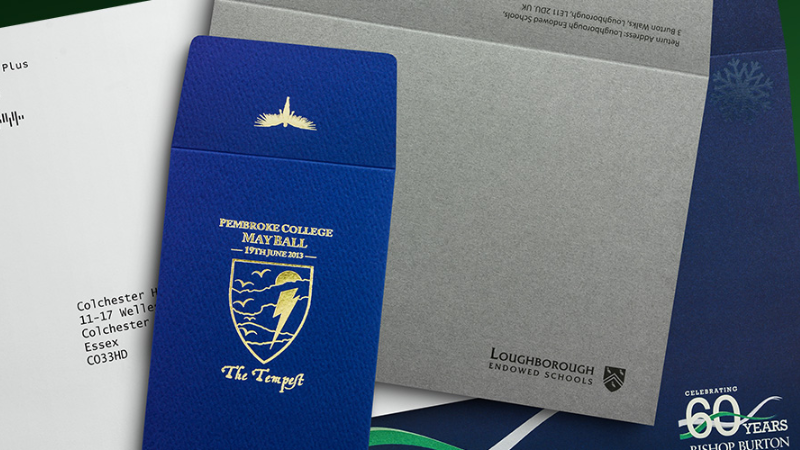Keeping examination papers safe has become a major concern. In India alone, from 2019 to 2024, at least 64 major examinations across 19 states were affected by question paper leaks. These incidents have led to exam cancellations, legal actions, and a loss of trust in many national examination systems.
To prevent such problems, educational institutions need reliable solutions. And exam envelopes are such tamper-evident solutions that provide one of the strongest layers of protection. This guide explains what these envelopes are, how they differ from regular mailing envelopes, and how institutions can choose and use them effectively.
What Is an Exam Envelope?
An exam envelope is a specialized security envelope designed to store and carry question papers, test papers, sample papers, and answer booklets during the examination process. Unlike a regular mailing envelope, its purpose goes beyond simple document transport.
It is built to keep sensitive information and important documents safely secured until the right time, protecting against tampering, leaks, or accidental damage. Here are the main types of these envelopes:
- Paper-based exam envelopes: thick, durable paper with sealing strips
- Poly envelopes: made of a polymer material that resists moisture, handling, and rough transport
- Padded options: extra lining that helps protect sharp corners and adds cushioning for sensitive documents
These options give institutions flexibility depending on the scale and sensitivity of their exams. Smaller tests may need only paper-based versions, while national examination agencies handling thousands of candidates often choose poly or padded envelopes for optimum security during storage and transport.
Core Security Features That Protect Exam Materials
To reduce the risk of lost question papers, tampering, or leaks, exam envelopes and examination paper security bags are designed with multiple layers of protection. Here are the core features that work together to keep test papers, sample papers, and answer booklets safely secure.
1. Tracking Identifiers: Serial Numbers, Barcodes, and QR Codes
Each exam envelope can carry unique identifiers such as barcodes, serial numbers, or QR codes. These identifiers make it easier to log chain-of-custody details, monitor distribution, and trace an envelope in case of irregularities.
If a package is misplaced, the identifier helps track where it was last scanned or who handled it, reducing the risk of lost question papers during the examination process.
2. Light-Proof, Tear-Resistant Construction
Exam envelopes use a thicker, more durable material than regular mailing types. That material blocks light, so no one can hold the envelope up and read the contents inside. It is also resistant to tearing or cutting, and protects contents during transport and storage.
This is particularly important for national examination councils and agencies that move large volumes of sensitive information across different regions.
3. Tamper-Evident Sealing Mechanisms
A tamper-evident seal is one of the most critical parts of an exam envelope. Once applied, it shows clear visual changes if anyone attempts to peel it back or reseal it. The seal might leave behind residue, break into pieces, or display a warning message when disturbed. This makes unauthorized access immediately noticeable.
4. Good Tension and Protection Against Sharp Edges
Exam envelopes are built with structural strength. Good tension helps them keep shape even when carrying thick stacks of papers.
Some envelopes have extra reinforcement that helps protect the sharp corners of documents inside so they do not pierce through during storage or transport. This feature keeps the contents intact and prevents damage to valuable examination materials.
How do Examination Paper Security Bags Work?
Tamper-evident exam envelopes are designed to show clear visual signs if someone attempts to breach them. Features like security tapes that display a “void” message, seals that fragment when lifted, or adhesives that leave residue make it obvious when an envelope has been opened.
According to a market report, demand for tamper-evident packaging is expected to reach approximately $2.78 billion by 2032, largely because institutions and agencies need packaging that instantly reveals tampering. Another key function is resistance to advanced tampering attempts.
Some individuals may try using heat, solvents, or sharp tools to open and reseal envelopes without leaving a trace. To counter this, exam envelopes use adhesives and polymers that distort or lose integrity under such conditions. Studies on tamper-evident packaging show that heat or solvents leave visible damage, making resealing impossible.
Using Exam Envelopes in Secure Distribution
Moving examination materials between locations requires strict control. Question papers, test papers, and answer booklets often change hands several times before reaching students, and every step poses a security challenge. Tamper-evident exam envelopes help maintain protection by creating a barrier against unauthorized access. Exam envelopes are useful in several phases:
- Internal campus transfers: Moving question papers or answer booklets from the printing room to exam halls or storage.
- Shipping to remote testing centers: When national boards or national examination agencies send test papers to distant centers, envelopes must travel safely.
- Secure chain-of-custody logging is essential: Who handled the envelope, when it changed hands, who verified the seal before the exam, and after.
By combining tamper-evident technology features with strict handling protocols, institutions create a traceable system that reduces the risk of lost question papers and protects the integrity of national examination systems. Proper use of these envelopes also reassures students and stakeholders that exams are conducted under optimum security standards.
Applications of Exam Envelopes in Educational Institutions
Exam envelopes are used across different levels of education, each with its own security needs. The following are the key areas where exam envelopes play a vital role in protecting question papers, answer booklets, and other sensitive documents throughout the examination process.
Universities and Colleges
Universities and colleges handle large volumes of exam papers, answer booklets, and sample papers every semester. Exam envelopes provide a secure way to transfer these materials between printing rooms, storage areas, and exam halls. They help staff maintain control over sensitive information and avoid cases of lost question papers.
For institutions that manage thousands of students at once, tamper technologies‘ features ensure that any breach is immediately visible. This adds confidence to the examination process, as faculty and students know that test papers are safely secured from creation to final collection.
High School Exam Boards
High school exam boards often run standardized tests across multiple schools at the same time. Exam envelopes make it possible to distribute identical sets of question papers securely, without the risk of leaks or early access. Each envelope can be tracked with serial numbers or barcodes to confirm proper chain-of-custody.
In regions where examination paper leaks have disrupted education, boards increasingly rely on examination paper security bags. Their tamper-evident security seals and light-proof construction help preserve the fairness and credibility of assessments for all students involved.
Professional Certification Bodies
Professional certification exams carry high stakes, as they often determine career eligibility. Exam envelopes ensure that sensitive information, such as test papers and answer booklets, remains protected during storage and transport. This level of security reassures candidates and employers alike.
Many certification bodies also choose custom-printed exam envelopes that include logos, unique codes, or watermarks. These extra features prevent counterfeiting and support optimum security standards expected in industries where qualifications must remain trustworthy.
Distance Learning Programs
Distance learning programs face unique challenges because question papers and answer booklets must often travel long distances by mail or courier. Exam envelopes with tamper-evident seals and strong construction provide a reliable way to deliver materials without compromising security.
For programs with international candidates, poly or padded envelopes protect sharp corners and withstand rough handling during transit. By using these secure packaging options, distance learning providers can maintain the same exam integrity as traditional classroom settings.
Choosing the Right Exam Envelope for Your Needs
Selecting the proper exam envelope depends on the exam type, scale, and security needs. Smaller classroom tests may only need basic paper envelopes, while high-stakes national exams demand stronger materials to prevent tampering and ensure integrity.
Custom-printed envelopes can include features like serial numbers, barcodes, or clear windows. These additions help staff track and manage exams, reducing handling errors and maintaining accountability.
Consider storage and transport conditions carefully. Envelopes should withstand long journeys, exposure to humidity, heat, or pressure, and the risk of sharp edges or bending. Choosing the right material ensures documents stay intact and secure until grading. Here’s a simple guide to common envelope options and their typical applications:
| Envelope Type | Material Features | Recommended Use | Security Level |
|---|---|---|---|
| Standard Paper | Lightweight, basic flap closure | Small classroom tests, quizzes | Low |
| Poly Envelope | Tear-resistant, moisture-proof | Mid-size exams, district-level tests | Medium |
| Padded Envelope | Extra cushioning, durable exterior | National exams, answer scripts | High |
| Custom-Printed Envelope | Serial numbers, barcodes, clear window | High-stakes exams, confidential exams | Very High |
Selecting the right envelope reduces risks of loss, damage, or unauthorized access. Match the envelope type to the exam’s scale, sensitivity, and transport needs to maintain document security from start to finish.
FAQs
Q1: Are examination paper security bags reusable?
Most are designed for single use to preserve tamper evidence, though some heavy-duty poly versions can be reused if security isn’t compromised.
Q2: Can they be customized with institutional branding?
Yes, many suppliers offer printing options for logos, colors, or clear window panels to support institutional identity.
Q3: How long do tamper-evident seals last?
They usually remain effective for the full exam cycle, but factors like storage conditions and handling can affect their durability.
Conlusion
From universities to national examination councils, secure envelopes reduce the risks of leaks, theft, or lost question papers. They have tamper-evident features and a durable build that make them an essential tool in education today. So, investing in the right exam envelope means not only keeping question papers and answer booklets safely secured, but also building trust in the entire examination process!









